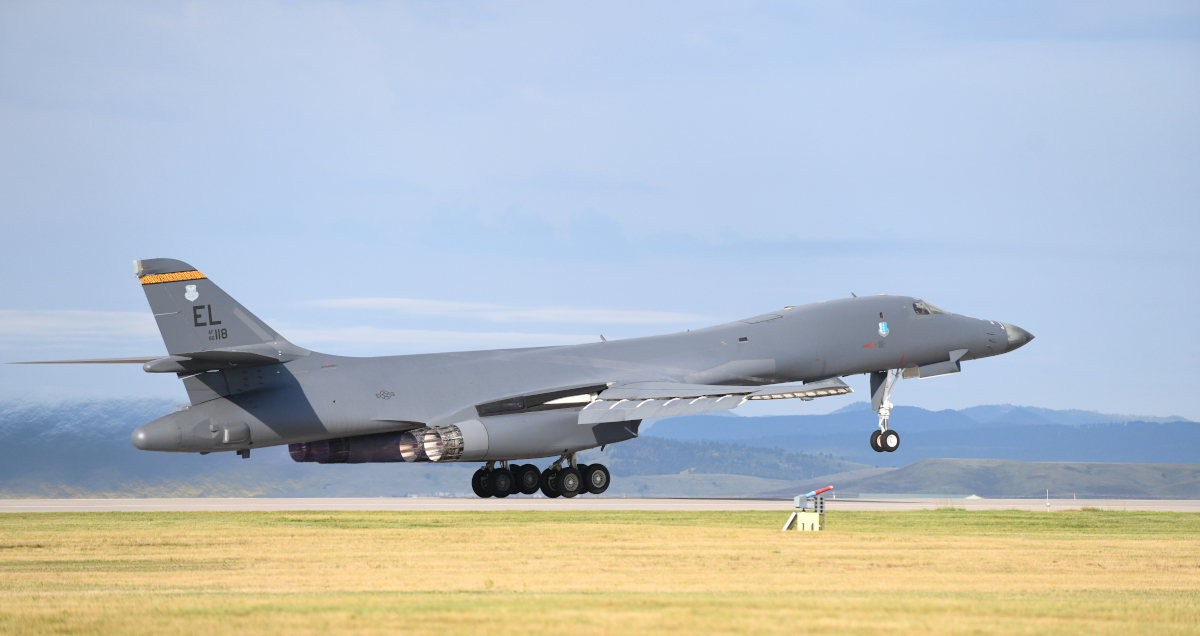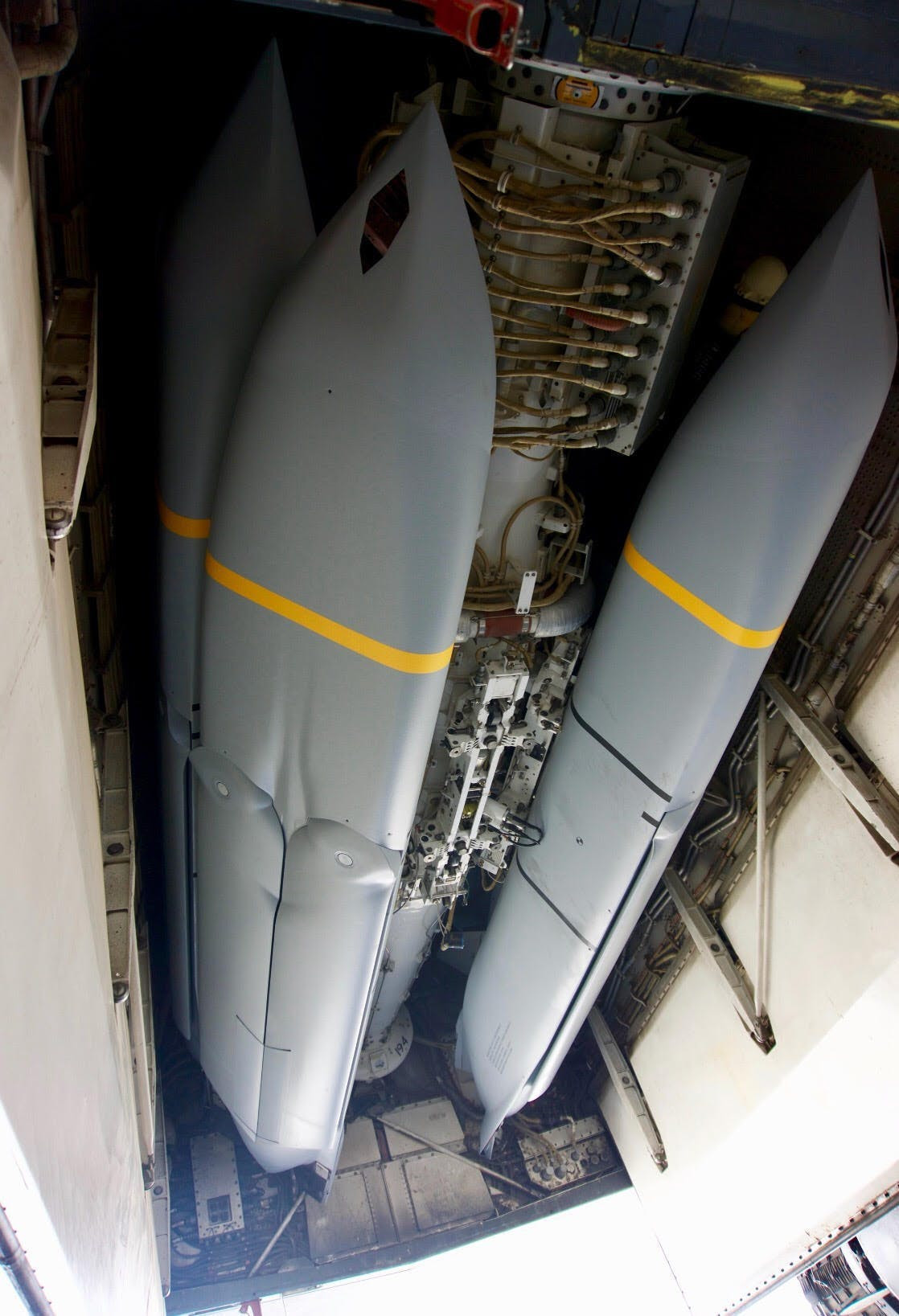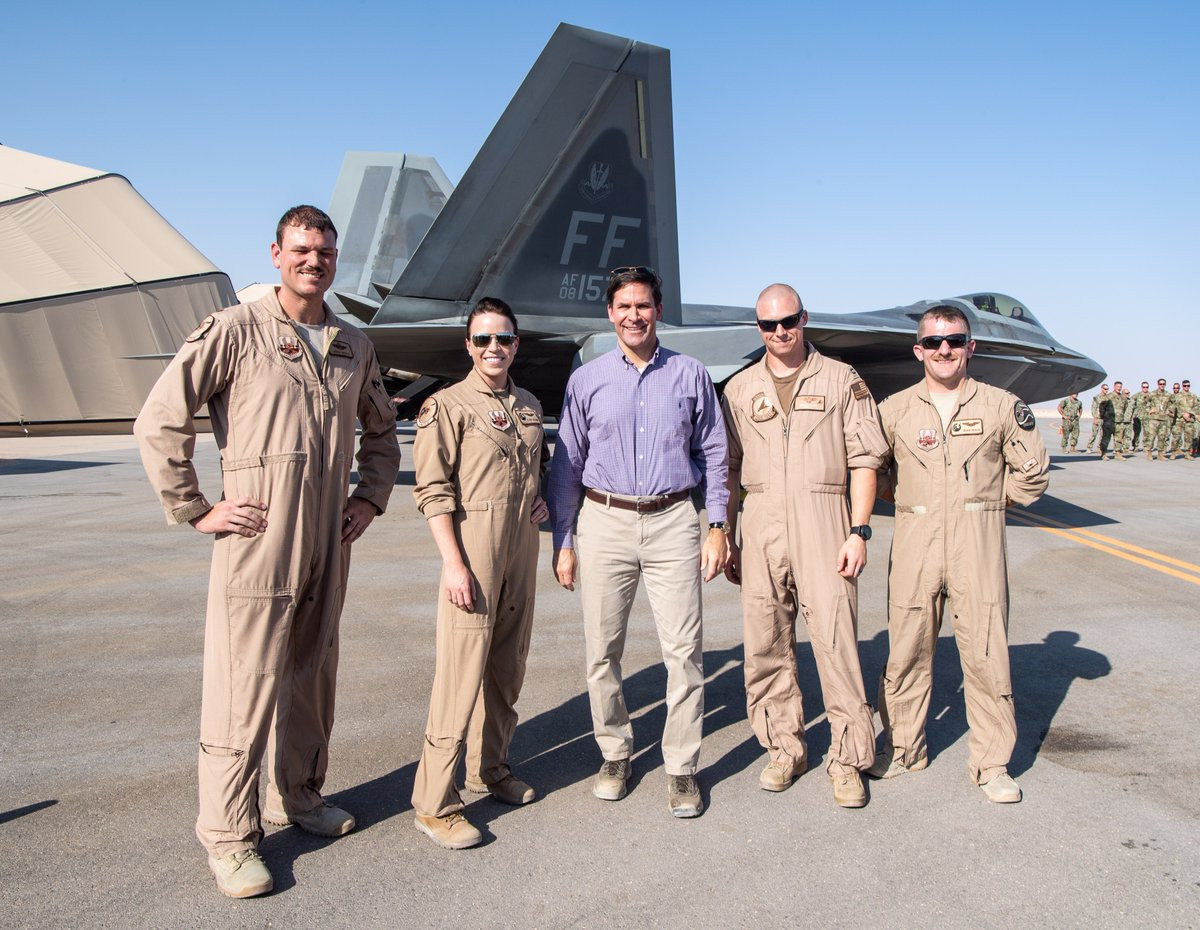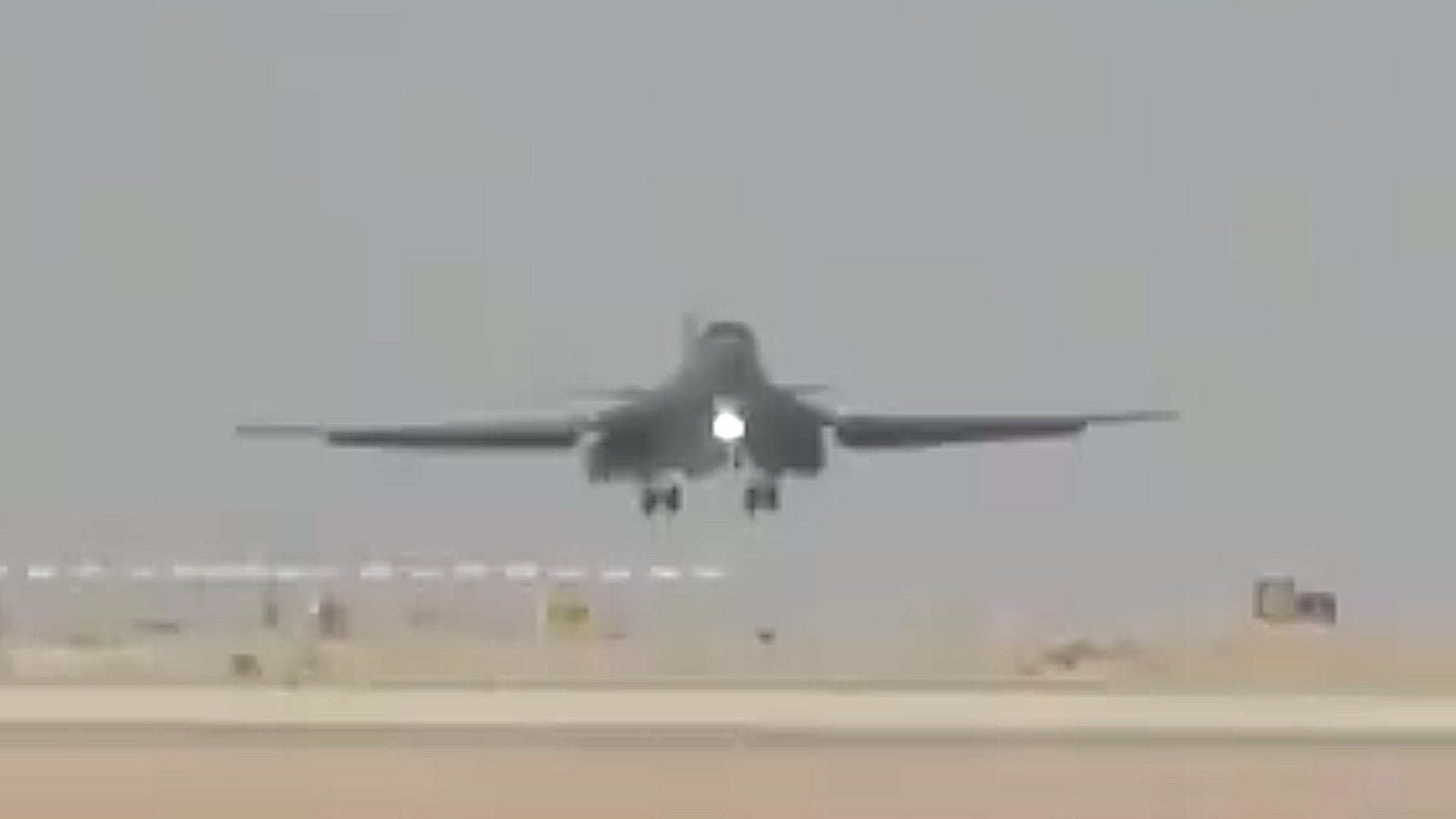The U.S. Air Force has deployed an unspecified number of B-1B Bone bombers to Prince Sultan Air Base in Saudi Arabia, which appears to be the first time the service has deployed these aircraft or any other heavy bombers to that country. This comes two weeks after the Pentagon announced plans to establish a full Air Expeditionary Wing at this base as part of a buildup in Saudi Arabia following unprecedented cruise missile and suicide drone attacks, linked to Iran, on two major oil-related sites in the Kingdom last month. Air Force F-22 Raptor stealth fighters and U.S. Army Patriot missile batteries have already arrived at Prince Sultan as part of this broader plan.
U.S. Air Forces Central Command Tweeted a brief video of one B-1B landing at Prince Sultan Air Base, or PSAB, on Oct. 25, 2019, but did not say how many of the bombers were headed to the Saudi base or for how long. The social media post also said that the bombers had flown directly from Ellsworth Air Force Base in South Dakota, indicating that the aircraft are from that base’s 28th Bomb Wing. A seperate video from Air Force Global Strike Command showed at least four B-1Bs leaving Ellsworth for the deployment.
“The B-1B is a long-range strategic bomber able to strike any adversary at any location on the globe,” the Tweet said. “This demonstrates PSAB’s ability to conduct combat ops.”
In addition to appearing to be the first time the Air Force has sent bombers to Saudi Arabia, this deployment also marks the return of the Bones to the region for the first time since March, when the service withdrew a separate contingent of the bombers from Al Udeid Air Force Base in Qatar.
At that time, this meant there were no Air Force bombers of any kind forward-deployed to the Middle East at all for the first time in years. The Air Force also revealed that the B-1 fleet had been seriously overworked and had become dangerously overextended with the protracted deployments to the region.

In August 2019, then-head of U.S. Strategic Command, revealed that just six of 62 B-1Bs, or around 10 percent of the fleet, were fully mission capable. The United States had sent bombers back to Al Udeid in May, but in the form of four B-52s, in response to intelligence related to potential threats to American interests in the region from Iran or its proxies. The arrival of the Bones at PSAB would indicate that the readiness rates for those aircraft have improved at least to some degree.
As with the B-52s, the B-1Bs represent a standing threat to Iran, or any other regional opponents, offering the ability to launch stand-off cruise missile strikes from multiple vectors. Bones flying from Al Udeid notably demonstrated this capability when they took part in U.S.-led missile strikes against chemical weapons infrastructure in Syria in 2018 using AGM-158A Joint Air-to-Surface Standoff Missiles (JASSM).

From PSAB, these bombers could also conduct patrols in and around the Persian Gulf, including to keep tabs on Iran’s Islamic Revolutionary Guard Corps’ maritime movements that may present risks to American or other friendly naval vessels or commercial shipping. B-1s regularly conduct similar overwater missions from Key West targeting drug smugglers in the Caribbean Sea. In July 2019, pictures also emerged of Air Force F-15E Strike Eagles performing maritime patrols, armed with precision-guided bombs and cluster munitions, optimal loadouts for engaging swarms of the kinds of small boats that the IRGC operates.
Of course, there is no reason the B-1Bs couldn’t perform these same missions from Al Udeid, which is their usual base in the region. This would suggest that a major objective of the deployment is to underscore the United States’ specific commitment to Saudi Arabia or is a product of concerns about the potential vulnerability of other bases in the region to attacks should an larger conflict break out in the region. PSAB is some 200 miles inland from the Persian Gulf, much farther from that body of water than Al Udeid, but it is still well within range of Iran’s ballistic missile arsenal.
The deployment is also in line with plans the Pentagon announced earlier this month to establish a full Air Expeditionary Wing (AEW) in Saudi Arabia, which will likely be headquartered at PSAB, if it isn’t already, something The War Zone
highlighted the significance of at the time. This was a clear signal that the Air Force expected to set up a more robust and long-term presence in the Kingdom that could also oversee additional units surging into the region to respond to future crises.
This was part of a larger U.S. military deployment that came in the aftermath of cruise missile and suicide drone attacks on Saudi Arabia’s Abqaiq oil processing facility and the Khurais oil field in September 2019. Saudi Arabia said that Iran was undeniably involved, but has not blamed the regime in Tehran directly. The United States has accused the Iranian government of carrying out the attacks from its own soil.
Curiously, the most recent official announcement about American forces heading to the region on Oct. 11, 2019, did not mention bombers at all. It did say that there would be two Air Force fighter squadrons heading to the Kingdom. Secretary of Defense Mark Esper’s recent visit to Saudi Arabia confirmed that F-22 Raptor stealth fighters from the 192nd Fighter Wing, Virginia Air National Guard, had already deployed to the country, as had Army Patriot surface-to-air missile batteries.

Tensions between the United States and Iran have been ebbing and flowing for most of the year, with the United States blaming the regime in Tehran for a number of hostile acts, including a string of attacks on commercial oil tankers in the Gulf of Oman. The IRGC did shoot down a U.S. Navy RQ-4A Global Hawk drone in June, which almost prompted U.S. military strikes in response. The IRGC has also seized a number of oil tankers in the strategic Strait of Hormuz in recent months.
The U.S. military had already begun increasing its presence in Saudi Arabia in light of these earlier regional security concerns, but announced the deployment of a significant number of additional personnel in the aftermath of the Abqaiq and Khurais attacks. In total, the United States expects to eventually have 3,000 personnel in the Kingdom.
The new deployment of the B-1s, even if it is relatively short, only underscores these broader plans to expand the Air Force’s presence in Saudi Arabia in the near term. It sends a clear message to Iran, or any other American opponents in the region, that the United States is both willing and now increasingly able to send very capable strike assets to the Kingdom to respond to any threats, if necessary.
Contact the author: joe@thedrive.com
